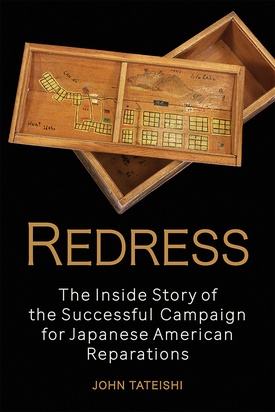The topic of the Japanese American Redress Movement has been abundantly rewarded by its parade of prominent chroniclers. Those authored or edited volumes which I have been privileged to read, and in some cases, to critically review, are: William Minoru Hohri, Repairing America: An Account of the Movement for Japanese American Redress (1988); Leslie T. Hatamiya, Righting a Wrong: Japanese Americans and the Passage of the Civil Liberties Act of 1988 (1993); Yasuko I. Takezawa, Breaking the Silence: Redress and Japanese American Ethnicity (1995); Mitchell T. Maki, Harry H. L. Kitano, and S. Megan Berthold, Achieving the Impossible Dream: How Japanese Americans Obtained Redress (1999); Robert Sadamu Shimabukuro, Born in Seattle: The Campaign for Japanese American Redress (2001); Alice Yang Murray, Historical Memories of the Japanese American Internment and the Struggle for Redress (2008); and Lane Hirabayashi et al., NCRR (2018).
I have been drawn to this genre of Japanese American historical literature because of my specialized research field of Nikkei resistance to their unjust World War II oppression by the U.S. government. To my mind, however, the most important resistance mounted by Japanese Americans against their mistreatment was not that which occurred during the war, sporadically manifesting itself in individual and group acts of rebellion — as notable and heroic as many of these deeds were — but rather that which mobilized during the protracted postwar Redress Movement. It not only embraced a far greater number of passionately engaged (yet non-violent) participants within the Japanese American community, but also culminated in consequences more far-reaching in terms of personal/collective dignity, social justice, civil liberties, constitutional rights and the clarification of what precisely it means to be an American.
My reading of John Tateishi’s page-turning Redress has deepened my conviction of the astonishing significance of the Japanese American Redress Movement. For me, Tateishi’s hybrid history-and-memoir tome is a masterpiece. In conveying “the inside story of the successful campaign for Japanese American reparations” and his role as the dedicated but oft-confrontational and controversial redress director for the national Japanese American Citizens League arm of this 10-year campaign, Tateishi employs a narrative style of enviable verve, perspicacity, candor and bite. Organizing his book into seven topical-chronological parts (“Beginnings,” “Launching the Campaign,” “The Strategy,” “The First Legislative Fight,” “The Commission,” “The Final Stage” and “Lessons from the Past”), Tateishi readily acknowledges the myriad contributions of his allies, treats those in opposition to him with respect and renders transparently (leastwise for the most part) the bases, reservations, and justifications for his decisions in his dual role as the JACL’s all-around point-person and legislative lobbyist for redress.
The spot in Tateishi’s book where his transparency is arguably problematic comes about in its penultimate part. There the author makes two cases: (1) that the rationale for the 1984 takeover of the JACL leadership by a faction coalescing around the insurgent Legislative Education Committee and the attendant loss of his role as legislative lobbyist to the LEC came about because the LEC “breakaway group” wanted the JACL, a purportedly civil rights organization, to devote itself exclusively to the single issue of winning redress; and (2) that he and his JACL cohort group felt that this development would be “myopic and would be rightly viewed as self-serving at a time when the Asian American community had so many (other) pressing needs” (pp. 317). This situation led to Tateishi resigning his post in 1986, leaving the Grayce Uyehara-led LEC to direct the legislative campaign that eventuated in the Civil Liberties Act of 1988.
Grant Ujifusa, LEC’s chief strategist, has publicly differed with Tateishi both as to why the JACL leadership pulled back on their commitment to redress and why Tateishi’s account of the redress campaign during its concluding — and crucial — two years is anything but that of an “insider.” Accordingly, it is expected that Ujifusa will author a forthcoming redress book. Whether or not this particular book materializes, John Tateishi has set an exceedingly high bar for all future authors of redress volumes.
REDRESS: THE INSIDE STORY OF THE SUCCESSFUL CAMPAIGN FOR JAPANESE AMERICAN REPARATIONS
By John Tateishi
(Berkeley, Calif.: Heyday, 2020, 384 pp., $28, hard cover)
*This article was originaly published by Nichi Bei Weekly on July 16, 2020.
© 2020 Arthur A. Hansen, Nichibei Weekly








